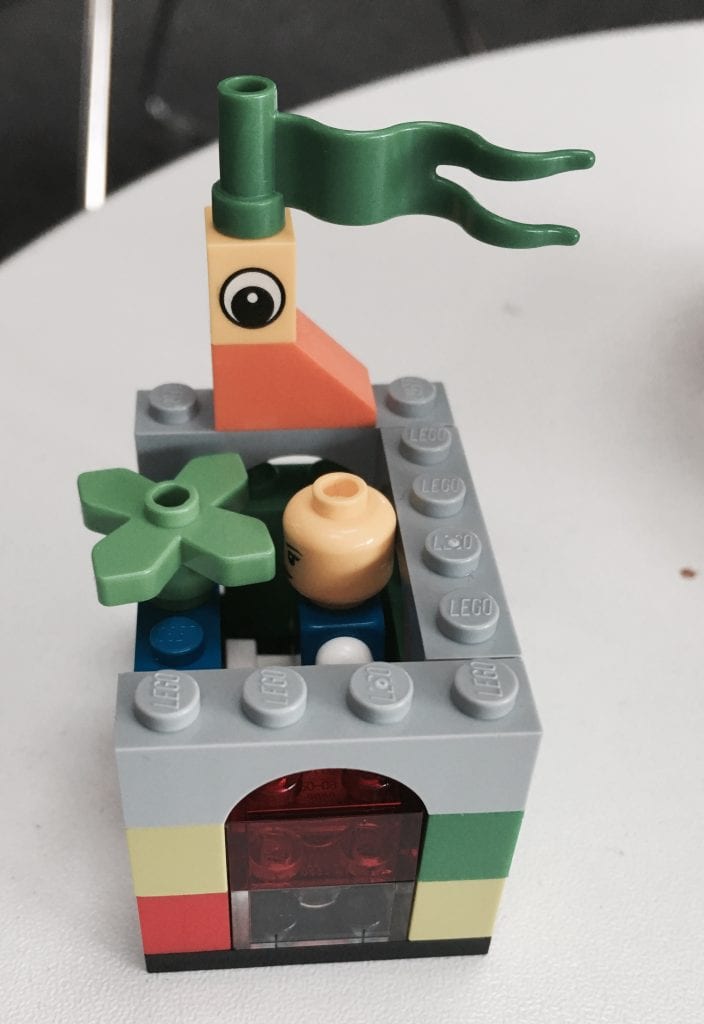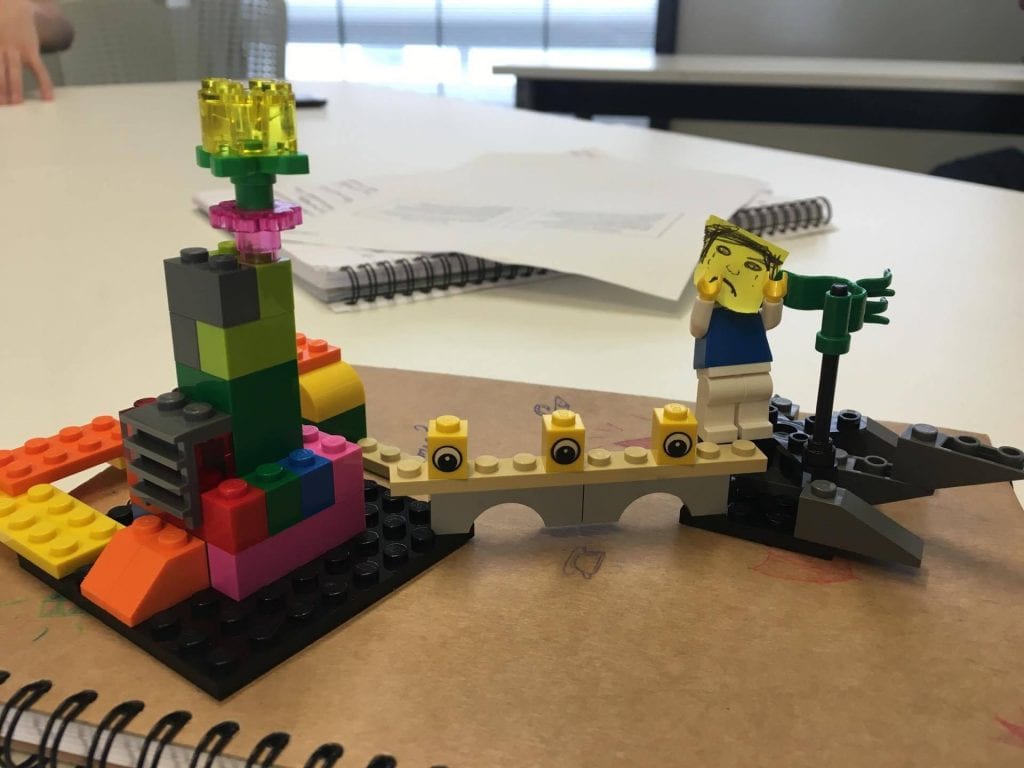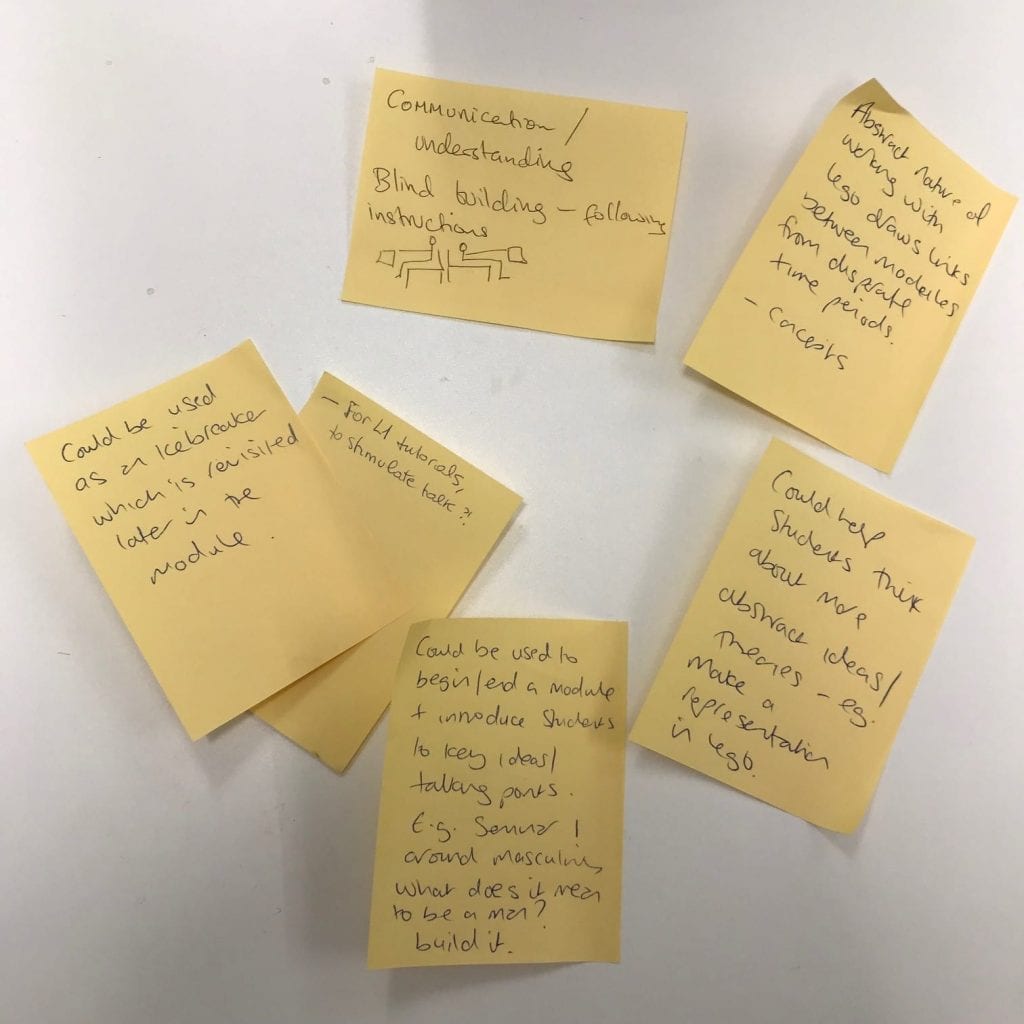by Dr Jamie Wood and Dr Katherine Fennelly
Many of us remember playing with historically-themed Lego as children, although most people probably won’t have recreated entire cities. Whatever our ambitions, there just weren’t enough bricks!
Some teachers have long recognised the potential of Lego to assist learning, primarily in schools. There are some great examples available online. Over the past decade or so, some use of Lego has been made in Higher Education too, including at York University in Canada, while the Advance HE in the UK also offer some useful advice.
This background inspired us to conduct some experiments in using Lego to teach History here at Lincoln over the past couple of years, including getting students to make models of their dissertation topics or to make a representation of their learning on an entire module about the Goths at its conclusion using Lego SERIOUS PLAYTM kits. Importantly, the students had to explain their thinking to peers and tutors as part of these activities.


Students really seemed to enjoy this alternative method, as did the tutors who tried it. Importantly, we noticed that it seemed to have a positive impact on student engagement and learning in class.
So, in 2018 we decided to apply for some funds to develop these insights and find out more about the potential pedagogic impact of Lego in History teaching. We feel that Lego has the potential to address two related challenges:
- Some students struggle to move from the specific details of their historical learning to more abstract thinking about how individual teaching sessions relate to the module as a whole (e.g. to assessment), or, at the meta-level, even how modules add up to the year or programme of study. Based on our experiences, we feel that Lego has real potential to enable students – particularly those who struggle to articulate their thoughts verbally – to move their thinking onto a more abstract and creative level.
- Conversely, some students benefit from working physically with the Lego, enabling them to visualise their learning in a very concrete way. We think that this will be particularly useful for subjects, which are by nature more focused on the visual and material world (e.g. art and architectural history modules, as well as Conservation, perhaps), but kinesthetic learners may benefit across the board from this approach.
As part of the project we are holding a series of ‘sandpit’ sessions for staff and students to learn about what we’ve done and to provide them with opportunities to use Lego in their own teaching.
The first sandpit session took place in November 2018, for staff in History and Heritage. In early 2019 we’ll hold further events for staff from elsewhere in the College, as well as for students.
Feedback on the first session was positive and colleagues came up with a number of ideas for how Lego might be used in their teaching:

Our experience is that Lego is great for starter and plenary activities and this was underlined in the sandpit session, while there were comments about its potential for enabling students to visualise their ideas:
- I can see that it would be a useful thing to do with the students. In particular I can see it working in our new dissertation module, which will be running next year for the revised degree. In the past students have been asked to put together a poster and give a research proposal, but I’d like to try it with a Lego version next year instead!
Importantly (and we would underline this point), Lego needs to be used in a targeted manner rather than just for novelty value (although occasionally this can work too):
- I think it’s the sort of thing that needs to be planned quite carefully, as I suspect what will work well is the novelty of it. If it’s over-used then it wouldn’t be exciting and different any more. Possibly use it only once or twice over the whole 3 years of undergrad.
We’re really keen to share what we’ve learnt and to gather further insights from beyond the School. So please do come and join us for the second Sandpit session, which will take place at 1-2pm on Wednesday 30th January 2019 in ATB3203 (Alfred Tennyson Building). Lunch will be provided.
Sign up here: https://bit.ly/2rnFxt7